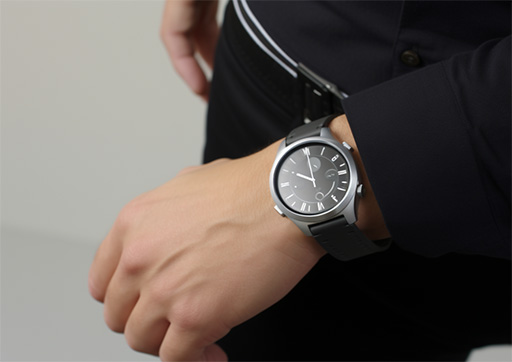What Is Passive Aggressive Behavior?

Examples include silence, avoidance, and lateness. It can make communication difficult and damage long-term relationships. This behavior is considered a ‘hidden’ or ‘concealed’ form of aggression, making it hard to address.
Passive aggression is a common coping technique that many persons use to avoid direct conflict. Severe passive aggressive behavior (medically referred to as Passive Aggressive Personality Disorder or PAPD) is commonly linked with numerous mental health issues.
People who suffer from passive-aggressive personalities may feel as hostile or aggressive as people who use other more visible types of aggression. While the Diagnostic and Statistical Manual of Mental Disorders (DSM-5) does not recognize PAPD as a mental health problem, many medical practitioners and mental health experts still help persons deal with this chronic behavior.
Hidden Or Concealed Aggression
Passive aggression is a type of hidden or concealed aggression expressed by a person who wants to communicate anger, hostility, or dissatisfaction without explicitly showing these feelings and emotions. Passive aggression often involves NOT doing things instead of doing certain things to show anger.
For instance, a person angry in a typical way may attend a social event and be hostile and rude to other people. However, a person who is passive-aggressive may avoid the event altogether or choose to attend and not talk to anyone at the gathering.
Passive aggression is often considered vindictive. A person may adopt this form of expressing anger or distress in revenge for a perceived insult or disdain. People who suffer from passive-aggressive personalities are advised to seek help from trained doctors and medical professionals at community mental health centers.
Causes
It can severely affect your relationships with your family members, friends, workmates, and romantic partners. So, why is it so common in society? A couple of things can cause people to develop passive aggressive behaviors in their day-to-day lives.
Taking The Easy Road – Being emotionally open and assertive is not always easy. When sharing your feelings and emotions becomes difficult, passive aggression may seem like the easier route to cope with your situation without having to deal with the root cause of your anger.
Situational Characteristics – Certain situations also have an impact. When you are in a situation where showing your anger is not appropriate or acceptable, such as at a family gathering or office meeting, you may be tempted to express your rage covertly to avoid confrontation or embarrassment.
Upbringing – Numerous studies have suggested that passive aggressive behavior may come from being raised in a setting or environment where directly expressing your feelings and emotions is frowned upon. People may grow up knowing they can never express their feelings openly, so they may look for other ways to convey their frustration or anger passively.
Examples of Passive Aggressive Behavior
Weaponized Incompetence – Weaponized incompetence is when a person pretends to be incompetent to punish another person or avoid doing a particular task. For instance, a sibling may pretend not to know how to do a simple job like cleaning the house or washing the dishes, so they don’t have to be asked to do it in the future. This behavior may seem harmless and familiar among many people, but it is an aggression.
Subtle Digs – Negative comments or subtle digs is another common type of passive aggression. For instance, a person may share their opinion on a topic they know will anger another person, such as their weight or love life.
They may also use their knowledge about a person’s history to make them feel bad or ashamed of themselves. For instance, a spouse who was previously cheated on by their partner but forgave them might make negative comments around their partner relating to other couples who cannot keep their relationships together.
In this way, they keep reminding their partner of their previous mistakes even years after the described events, never allowing them to forget and subtly taking a dig at them. Such behavior may contribute to the gradual deterioration of relationships in the long run.
Silence – Silence, commonly referred to in modern jargon as the ‘silent treatment,’ involves a person punishing someone without doing or saying anything. They may selectively withdraw from time to time, refuse to discuss specific topics, or choose to ignore texts or calls completely. They may do this to punish another person for no reason.
Sarcasm – Sarcasm is when someone says something that they don’t mean. Sarcasm can be an aggression when someone uses it as a tool to punish others. For instance, people may sarcastically mock their romantic partner’s personality traits or looks.
Weaponized Kindness – People sometimes use visibly helpful or kind acts to show their emotions. For instance, a person who is angry that their friend forgot their birthday might, in turn, decide to go overboard and plan a huge birthday party for that person, then proceed to comment about how they could never forget such a momentous occasion.
Avoidance – People use many techniques to display aggression without being explicit about it. Some examples include 1) Ignoring as a form of aggression, like avoiding eye contact during a social event, 2) Avoiding specific topics of discussion, especially if the other person wants to talk about those topics, 3) Avoiding returning a loved one’s call and 4) procrastination.
Lateness – While genuine lateness is not a form of passive aggression, some types of lateness can be an aggression, especially if the person who is late has a reason to be late. Lateness is a common type of a passive aggressive person because the people who engage in it have plausible deniability that they lost track of time, were stuck in traffic, etc.
Repeated lateness can be used to show disdain to another person. It may also be used to make a person feel less important or to avoid tricky situations. Lateness is a clear aggression when used in this way.
Risk and Dangers
A study done in 2018 found that people who adopt this form may feel as much aggression as those who chose other styles of aggression. Scientists also found similar effects to different types of aggression, like emotional stress.
Some of the risks include:
Poor Mental Health may be both a cause and a symptom of poor mental health and well-being. People who frequently experience passive aggression may suffer from chronic anxiety and stress. Passive aggression is also commonly linked with other mental health problems.
More Aggression – A person may respond to similar or related behaviors. They could also make the situation worse by resulting in actual verbal or physical aggression.
Poor Communication – It involves trying to avoid directly expressing your emotions. It can negatively impact communication in a relationship, especially when a person denies that they have no ill intentions.

Relationship Problems – Passive aggression hides a person’s true intention, making it harder for the people around them to understand and respond to their feelings and emotions. Moreover, the desire to convey aggression without accountability or communication may negatively impact relationships.
Stress – Exposure to passive-aggressive behavior can be as psychologically harmful as exposure to verbal or physical aggression. Furthermore, a person may experience stress from having difficulties either understanding or adequately responding to the aggression.
Distrust and Suspicion – The respondents in the 2018 study found that trust deteriorated after exposure to passive aggression. It could be due to passive aggression being hard to address directly, potentially removing a sense of unity and partnership.
How To Deal With It

Passive aggression can be harmful to your relationships. You can take specific steps to change how you interact with other people. Here are a couple of ways you can address this behavior:
Practice Expressing Yourself – Using emotional health exercises to recognize your feelings and learning to express your emotions adequately is a crucial step toward eradicating it. Conflict is part and parcel of life but knowing how to express your feelings more effectively can result in better relationships.
Give Yourself Time To Adjust – Identifying your behaviors is the first step towards making a positive change but changing your reactions and patterns can take some time. The best thing is to be patient and take steps to track your progress over time.
Improve your Self-Awareness – It sometimes comes from not correctly comprehending why you are angry or upset—is paying attention to what is happening as you react to different situations and people.
How Can BioScan Help?
A medical practitioner uses BioScan to identify factors that cause stress to the body (stressors). BioScan produces different frequencies and records your body’s reaction to these frequencies. The test scans for thousands of bodily frequencies (stressors) and matches relevant frequencies with those in the BioScan proprietary database.
Any reading outside the normal parameters indicates that a person may be suffering undue stress that may be causing a wide variety of physical and psychological health complications such as passive aggressive people.
The BioScan System allows the medical practitioner to assess their patient’s condition and generate a report that shows:
– Whether the scan reading is acute or chronic.
– The severity of each stressor.
– The factors causing stress and the medical categories they fall under.
Many patients value and appreciate the ability to get to the root cause of their ailments. Medical practitioners can leverage the BioScan system to get a more accurate picture of what is going on with their patients.
Summary
Passive aggressive behavior can be harmful, and it is not uncommon for people to respond using passive aggression without knowing it. However, by understanding what causes this behavior and how to deal with it, you can change how you react to people and situations and improve the overall quality of life and relationships.
